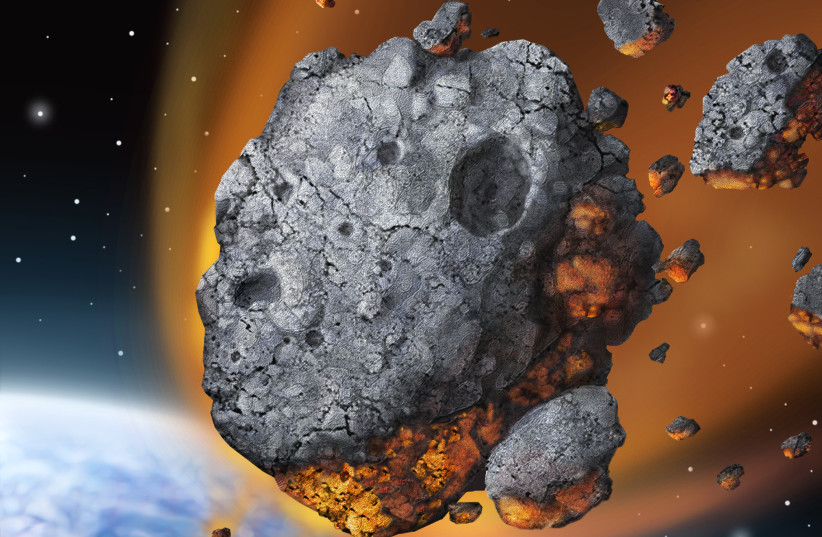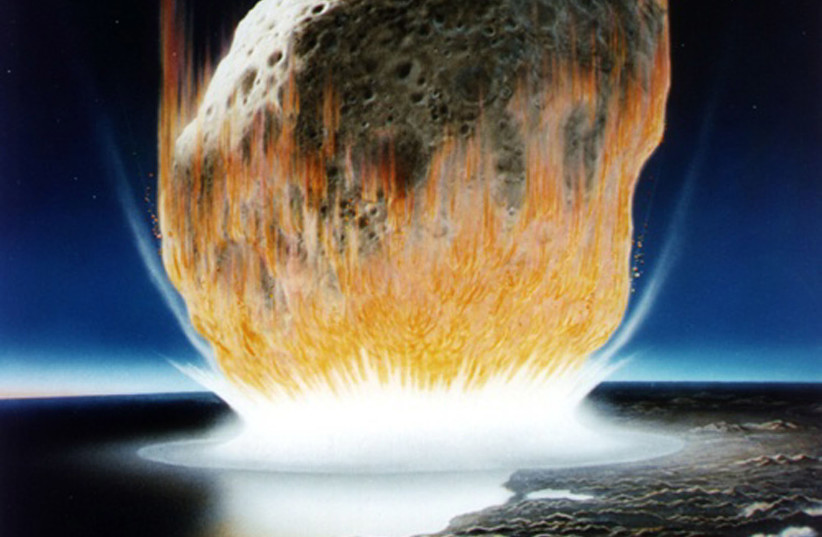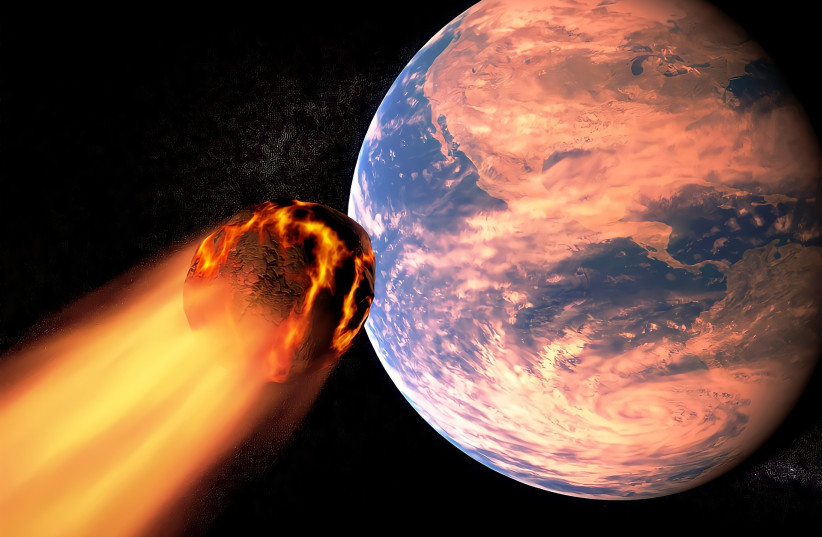Stopping an asteroid impact is one of the biggest challenges space agencies seek to overcome, due to the sheer level of destruction such an incident could cause.
But scientists at the University of California, Santa Barbara (UCSB) have proposed a new possible solution: Pulverize it.
Abbreviated as PI, this plan is more than just a simple idea. As detailed in a lengthy 131-page technical paper submitted to the academic journal Advances in Space Research and available on arXiv and the UCSB Experimental Cosmology Group website, the plan involves the use of hypervelocity kinetic penetrators to destroy asteroids, essentially "slicing and dicing" them to avoid a catastrophic impact.
The idea of destroying an asteroid in order to avert an impact, known as disruption, is itself nothing new – in fact, it is the method most commonly depicted in science fiction.
However, most scientists have refused to consider disruption as a viable option, as the debris that could be caused by an asteroid impact could still rain down on the planet and be catastrophic.
One method for possibly stopping the impact of an asteroid is through the use of deflection, which would mean launching something to slightly alter an asteroid's path. The most prominent of these efforts is the Double Asteroid Redirection Test (DART) Mission, set to be launched in November and the result of efforts by NASA and the Applied Physics Laboratory.
In layman's terms, it means punching an asteroid with a rocket with enough speed to change its direction by a fraction of a percent.
However, this method does have its flaws, most notably timing. The spacecraft used in the DART Mission has taken a considerably long amount of time and resources to develop and launch. In case of an asteroid impact that seems so sudden, that kind of time could be a luxury the planet can't afford.
Another method proposed in July 2021 by the Airbus company suggested an alternative, repurposing TV satellites by essentially hijacking them and using them as an ad hoc means of deflecting the asteroid.
The science behind this method seems sound, though it does have its flaws too, such as being able to deflect the asteroid when it's far enough away from the planet. That could hypothetically mean over six months away.
However, other scientists have been changing their approach to disruption. One example of this can be seen in a recent study published in the academic journal Acta Astronautica and led by Patrick King of John Hopkins University Applied Physics Laboratory, which studied hypothetically destroying an asteroid with a nuclear explosion. The study found the outcome of their scenarios promising, with around 99% or more of the debris not impacting the Earth.
But the PI study from UCSB does not involve the use of nuclear missiles, but rather the use of kinetic penetrators. These work by sending the penetrators (some filled with explosives) into the core of the asteroid, fracturing it into many small fragments below 15 meters in diameter at maximum.
These fragments would then be spread out into a cloud of fragments and, if not blown completely off course, would then head into the Earth's atmosphere at speeds of around Mach 60.
But this is where the Earth's atmosphere kicks in, as entering the atmosphere at such a hih speed causes it to experience severe levels of heat and pressure. These stresses would in turn cause the fragments to explode further, creating a sonic boom of sorts.
This may seem terrifying to some, because, as noted by the scientists involved in the study, it would seem similar to the explosion of a thermonuclear bomb. However. It is only a large "light and sound" show and is harmless, so there is no nuclear radiation risk. Dust could still be present, but it would not be so catastrophic as to cause a worldwide climate disaster scenario.
Of course, it is still theoretically possible for some asteroid fragments to hit the ground, but the scientists estimate that these fragments would be so small and slowed down by so much atmospheric drag that they would present little danger.
This is compared to a massive asteorid impacting the planet at full-force, which could be a potential extinction-level event,
But with an asteroid impact, timing is everything, and some of the biggest flaws in asteroid impact prevention are the amount of time it would take to stop them.
Most asteroids are detected by scientists when they are far from the planet, and their trajectory is calculated so as to check if these Near-Earth Objects (NEOs) would present a possible danger to the planet.
Currently, after the 370-meter asteroid Apophis was calculated to not strike the planet in its next pass around the planet, NASA has declared the Earth free of risk of an asteroid impact for the next century. However, this only applies to asteroids coming from the "front," meaning towards Earth and the Sun. Asteroids coming from the "back," towards Earth away from the Sun, are still notoriously difficult to detect.
For example, the last known significant asteroid impact was on February 15, 2013, when an asteroid exploded in the air above Chelyabinsk, Russia. This asteroid was just 17 meters wide, and while it didn't result in any casualties, the shock wave from the explosion shattered windows in six different Russian cities and caused 1,500 people to need medical attention.
Further, it should be noted that because this asteroid came from the "back," scientists didn't see it coming.
This was not an isolated incident, either. On September 16, asteroid 2021 SG, ranging between 42 meters and 94 meters in size, flew past the Earth, and scientists never even knew it existed, let alone was flying past the planet, until the next day.
Currently, NASA has plans in place that could change this, with Near-Earth Object (NEO) Surveyor space telescope set to be launched in 2026 set to help track these asteroids coming from the "back." However, there is still a matter of timing.
And it is with timing that the advantageousness of the PI plan really shines, as it can be launched on very short notice.
An asteroid the size of the one that entered the atmosphere above Chelyabinsk "could be intercepted a mere 100 seconds prior to impact, whereas one the size of the Tunguska impactor (50 meters in diameter) would require interception some five hours prior to impact," study lead researchers Philip Lubin and Alexander Cohen wrote in Scientific American. "Something the size of Apophis could be dealt with 10 days prior to striking Earth, and something as large as Bennu (a 500-meter asteroid) would need to be fragmented 20 days in advance."
This time frame is far shorter than any other viable plan, making it an ideal last resort. The scientists even propose a means of converting this into a rapid response approach, such as deploying these interceptor arrays in orbit or on the moon as a means of planetary defense.
“Extraordinarily rapid response is possible,” Lubin said in a statement, noting that it could be "easy as PI."
“Humanity could finally control its fate and prevent a future mass extinction like that of the previous tenants of the Earth who did not bother with planetary defense, the dinosaurs.”



